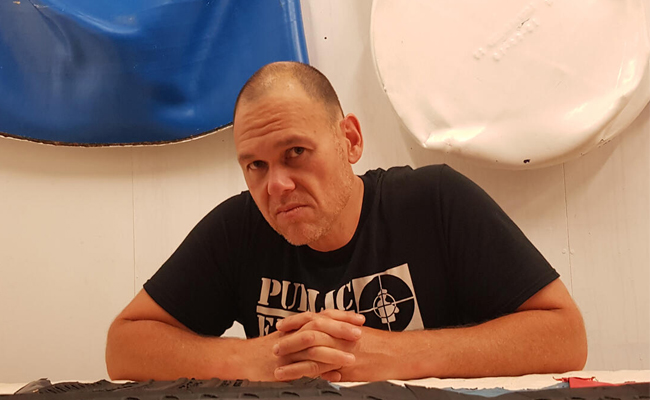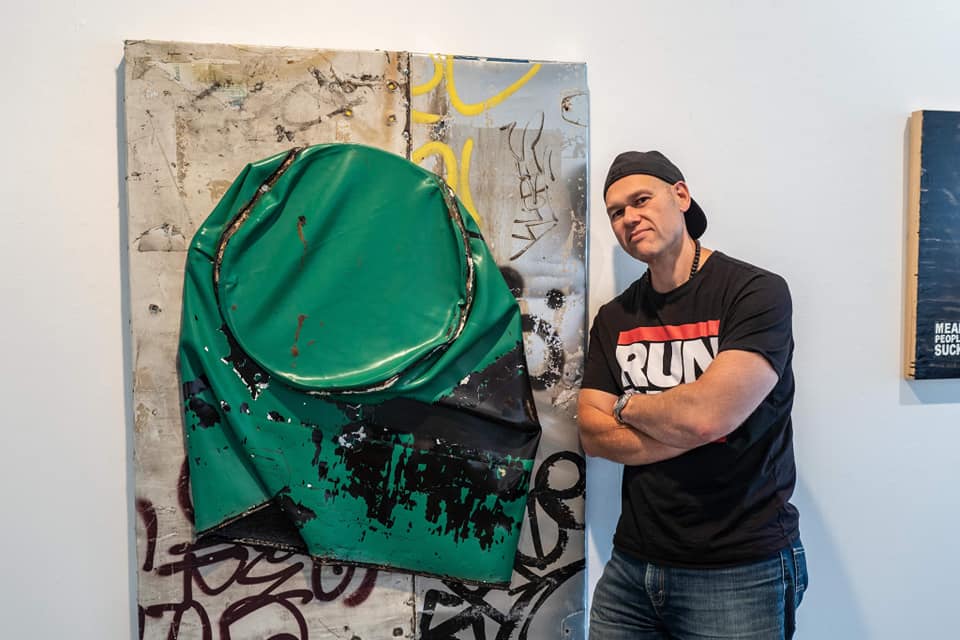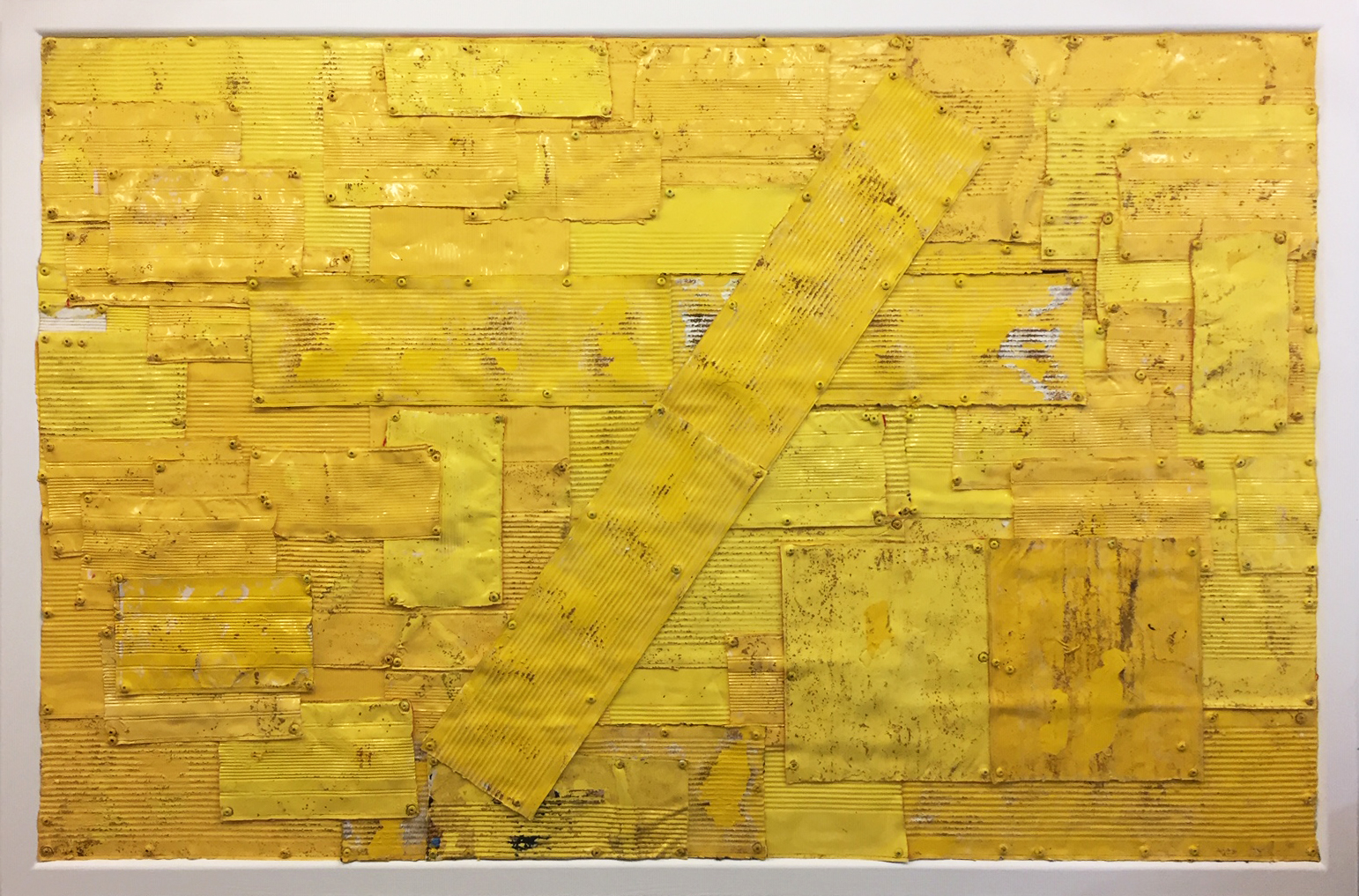Tips Of The Trade - Advice On How To Take Your Art Into "Business Mode"
Artist Sefton Rani is part of Toipoto -The Big Idea's free Creative Career Development programme - and was asked to share his expertise with his fellow mentees in a recent workshop. It struck a chord with many - so we're sharing it with the wider creative community to get an insight into how to turn your art practice into your art business.

After 10 years of watching paint dry full time, here are a few items - in no particular order - that are distilled from what has passed in front of me and through me.
They may help fellow artists out there engaging in the arm wrestle that is called an art practice.
Know your role
Understand where you want your art to be viewed and the lifestyle that will surround that. What you create and what is required differs between selling work in a gallery, online or a market.
Strive to make the work undeniable. Even if people don’t like the style of the work, they must acknowledge the quality.
Call yourself an artist. In a revolution, artists are often some of the first ones to be shot!
Get on with it, none of us are promised tomorrow.
But you need to earn the mantle of artist. Work ethic is the key to success, no matter what you do in life. Lots of people want to claim the title of artist but aren’t willing to put in the real work.
Clarify the essence of what you are doing and your drive to make art.
Keep drilling down by asking the “3 whys” until you reach the essence. It will not only help you in the studio but assist when writing your artist bio, replying to expressions of interest and talking to people about your art practice.
If you get stuck in the studio, work from your gut - not your head. You’ll be surprised how fast you move into the flow state again once you trust yourself. Or you could try changing the music or putting on a podcast. Sometimes the change in tempo activates the flow state again.
At the end of the day, leave the studio with something to start on as soon as you enter the studio the next day. It will help you get in the flow and save you sitting in the studio thinking ‘what next…’
Allow yourself at least 30% of your time in the studio to have fun, try new things, play with new materials or stress test new processes. It’s where the new energy and breakthroughs come from.
Mistakes are usually the best part of any artwork. Look after your art - and your art will look after you.
Creation is primal. All humans across the globe make marks, make music and dance. Remember that if someone ever makes a disparaging comment about you being an artist. You are closer to the essence than they are.
Work creates work. As an artist, you owe it to the work to get it out there. Art can only exist if it is seen, otherwise it never existed.

Back yourself
Coming into an exhibition, knowing at this point of my development this is the best I can do, will fill you with confidence when you know you have worked the hardest you can.
Every exhibition opening will leave you wishing if only I had another week or two, I would have really nailed it. You would feel the same even if you had the extra 2 weeks!
Artists who have been exhibiting for 50 years have the same fears leading up to an exhibition that you will have during your first one.
If everyone had to make every aspect of their last 6 months of work public - with nowhere to hide - nothing would ever get done, because 99% of people would be too afraid to do that.
Artists are brave enough to show not only their work - but their heart.
What would you attempt if you could never fail? Push your work as far and hard as you can to reach the invisible.
Think beyond the brush
To make a living from your art you need to embrace the fact making art and the business of art is different and requires a different set of skills. You need to master both skillsets or have someone manage one (or both!) to succeed.
Getting work on a gallery wall is only half the job done. Moving into art business mode helps get the work sold.
Respond to opportunities and requests immediately and give all the information asked for. Being easy to work with will open doors and become part of your brand.
It’s tough being an artist financially but remember it’s not what you earn it’s what you save.
You are selling emotions not art. The buyer will form an emotional reaction to what they see. Your job on the art business side is to not reduce that emotion by creating barriers to having someone purchase the work. Make sure the quality, framing, pricing etc is appropriate and doesn’t inhibit a sale.
Practice talking about your work and your practice out loud. Video it, listen to it, tighten it up and then constantly repeat it until it becomes effortless. Keep doing it especially as works become finished leading up to an exhibition. You will feel like an idiot every time and watching yourself on video is horrendous. It will pay off if you meet that person that pivots your trajectory, and you can express yourself succinctly.

Do a SWOT analysis on yourself, your last show or any aspect of your art practice you think may benefit from doing so. Understanding your Strengths, Weaknesses, Opportunities and Threats will help you in the quest to make your art practice sustainable.
But make sure you turn that SWOT analysis into actions - otherwise it was a waste of time and paper.
Have a tight elevator pitch ready to go at a moment’s notice. Update it as your practice evolves.
Keep proposals for expressions of interest succinct and focused on what has been asked for in the proposal. If you had to read 100 proposals that were full of fluff and one application was tight which one would grab your attention?
Apply for all proposals and opportunities that arise. If by some chance you are successful with them all, you will work it out one way or another. That repetition of exhibitions will give you confidence exhibiting, selling, making and being yourself as an artist. It will also keep your name in front of people.
If you miss out, don’t take it personally. Hope for the best outcome for all living things and figure it was better for someone else on this occasion to be successful. Review your submission and see how to strengthen it and come back stronger next time. Ask others to review it as well, maybe they can see opportunities for improvement.
Is the price right?
Manning your own exhibitions is a chance to understand how people look at your work and test the elasticity of your pricing.
After the show, do a review of what sold and are there trends on size, media, presentation etc from any feedback you received that could be useful going forward. If you sell all your work - it’s too cheap and you can increase the price and keep doing so until you feel you have hit your current ceiling.
Remember, it’s easier to increase the price than bring it down.
It’s better to get the work on people’s walls so they can advertise for you than come home from an exhibition having sold nothing because your pricing is unrealistic. You must earn the right to ask a higher price. It applies whether you are an artist or a CEO.
Spend time in the galleries or the environments where you see yourself selling your work. Watch and observe. Will your work align with their brand, price points, current offerings?
There is an ecosystem and it’s all a game. Understanding the rules of the game gives you the best chance for success.
Find your community
This one is important for your career and your wellbeing. Ensure they not only celebrate your wins but challenge you to reach higher levels.
Listen to comments on your work and ask for clarification if necessary. Don’t be defensive. Comments about the work quite often say more about the viewer than the work but they may give you an insight to blind spots or areas to improve. For instance, maybe framing with non-reflective glass could enhance the work even more.
Listen and use anything that may be useful then follow your path. It’s your journey and your arts journey, not theirs.
10% of people will love your work, 10% will hate it and the rest don’t care. The people in each category will swap around with each exhibition, depending on their response to what they see.
With that in mind, you can now feel free to make what you feel driven to create and not worry what others think about your work.
It takes one person to find you and pivot your career. Always be ready to meet that person and sell yourself and the narrative of your work to them.
Collect people’s emails at every opportunity and ask if you can send them invitations to any upcoming shows you may have. Especially collect the contact details of anyone who has purchased your work or who are strong supporters. Not only are they usually good people - but they are often genuinely interested in your work or watching your career develop.
If you have open studios in your area participate in them. It’s a great way to meet some nice people and collect email addresses! Have some biscuits ready as well. If they have children, it will keep them happy, and people will stay a little longer and be more attentive if they are chewing!
If you feel comfortable allowing people to come to your studio and see your work, then do so. Artist studios are sacred places and allowing the right people who appreciate that perspective to see them can be a joyful experience for both of you and lead to opportunities and friendships.
If you are given an opportunity to show work in a gallery - especially a dealer gallery - make sure your people turn up. Use that email database and make sure your collectors, friends, family and supporters come along.
It helps give your exhibition a buzz, it shows the gallery it was worth taking a chance in showing your work as you are working as hard as they are. it may add to the galleries database of clients, and it creates a win/win situation for you and the gallery.
Give a hand up to other artists as well. Be generous and assist when they are ready to step up to the next level.
Keep…
Keep fine tuning and updating your artist bio and CV.
Keep learning. Books, podcasts, videos, artist talks, chatting with your community all help connect the dots or make you aware of the ones you didn’t even know existed.
Keep a notebook handy and jot down those random thoughts for new work. You can return to them if you paint yourself into a corner even if it’s years later.
As an artist friend of mine always says… keep the faith.
And If all this fails, I return to the below letter. I find it useful especially, leading up to an exhibition if I start to have doubts about the body of work.
Keep The Channel Open
A Letter to Agnes De Mille from Martha Graham
There is a vitality,
a life force,
a quickening
that is translated through you into action,
and because there is only one of you in all time,
this expression is unique.
And If you block it, it will never exist through any other medium and be lost.
The world will not have it. It is not your business to determine
how good it is
nor how valuable it is
nor how it compares with other expressions.
It is your business to keep it yours clearly and directly
to keep the channel open.
You do not even have to believe in yourself or your work.
You have to keep open and aware directly to the urges that motivate YOU.
Keep the channel open…
No artist is pleased…
There is no satisfaction whatever at anytime
There is only a queer, divine dissatisfaction
a blessed unrest that keeps us marching
and makes “us” MORE alive than the others.
– Martha Graham
Source: thebigidea.nz
